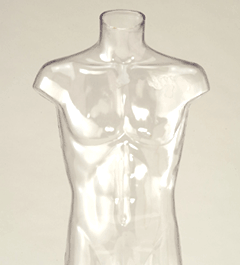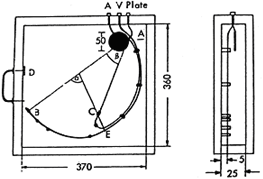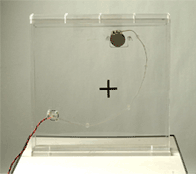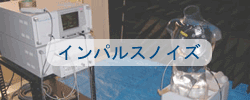Research and Development Menu (Tap to display menu)
ICD Device Testing
We conduct various actual ICD device tests.
ICD Device Test Conditions
| Human Phantom | Irnich Phantom | ICD Settings | Malfunction Determination | Measurement System & ECG Signal Generator |
Human Phantom
The human phantom is a half-body hollow acrylic model simulating the standard body type of a Japanese male, filled with 0.18% saline solution to emulate human tissue electromagnetically (Photo 1). The ICD device and pacing lead are installed under the left clavicle of the phantom. The lead simulates a configuration with an electrode implanted in the ventricle.

Photo 1: Human Phantom
Irnich Phantom
This biological model was developed by Werner Irnich (Figure 1), consisting of a rectangular container of specified dimensions filled with 0.18% saline solution to simulate human tissue electromagnetically.


Reference: Irnich, W.: Interference in Pacemakers. PACE, Vol.7, November–December 1984, Part I, pp.1029–1048.
ICD Settings
All devices were set to a rate of 50 ppm and VVI unipolar pacing mode. Sensitivity was set to the highest possible value, and the refractory period to the shortest possible value—thus creating the conditions most likely to cause malfunctions.
Malfunction Determination
A malfunction is determined if either of the following occurs:
- 1. In the absence of a simulated heartbeat input, when the heart is not beating and ICD activation is needed, the ICD misidentifies electromagnetic waves as heartbeats and stops functioning.
- 2. With simulated heartbeat input, if electromagnetic waves prevent the ICD from detecting the signal, it delivers unnecessary stimulation despite the heart beating properly.
Measurement System & ECG Signal Generator
A probe was placed at the tip of the pacing lead and connected via cable to the measuring equipment. Using this cable and probe, pacing pulses were detected and pseudo-ECG signals were input (Figure 2). The measuring instrument used was the NR-2000 from Keyence. The waveform of the pseudo-ECG signal input from the generator was a sine-squared wave, with amplitude approximately twice the minimum threshold required to trigger the ICD response.

Figure 1: Connection of Human Phantom and Measurement Devices



